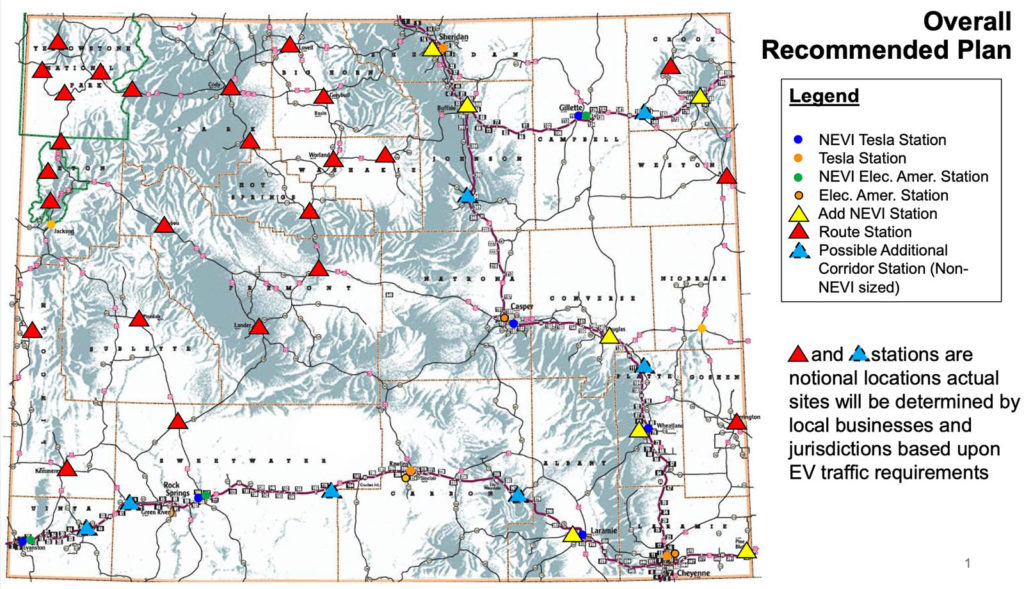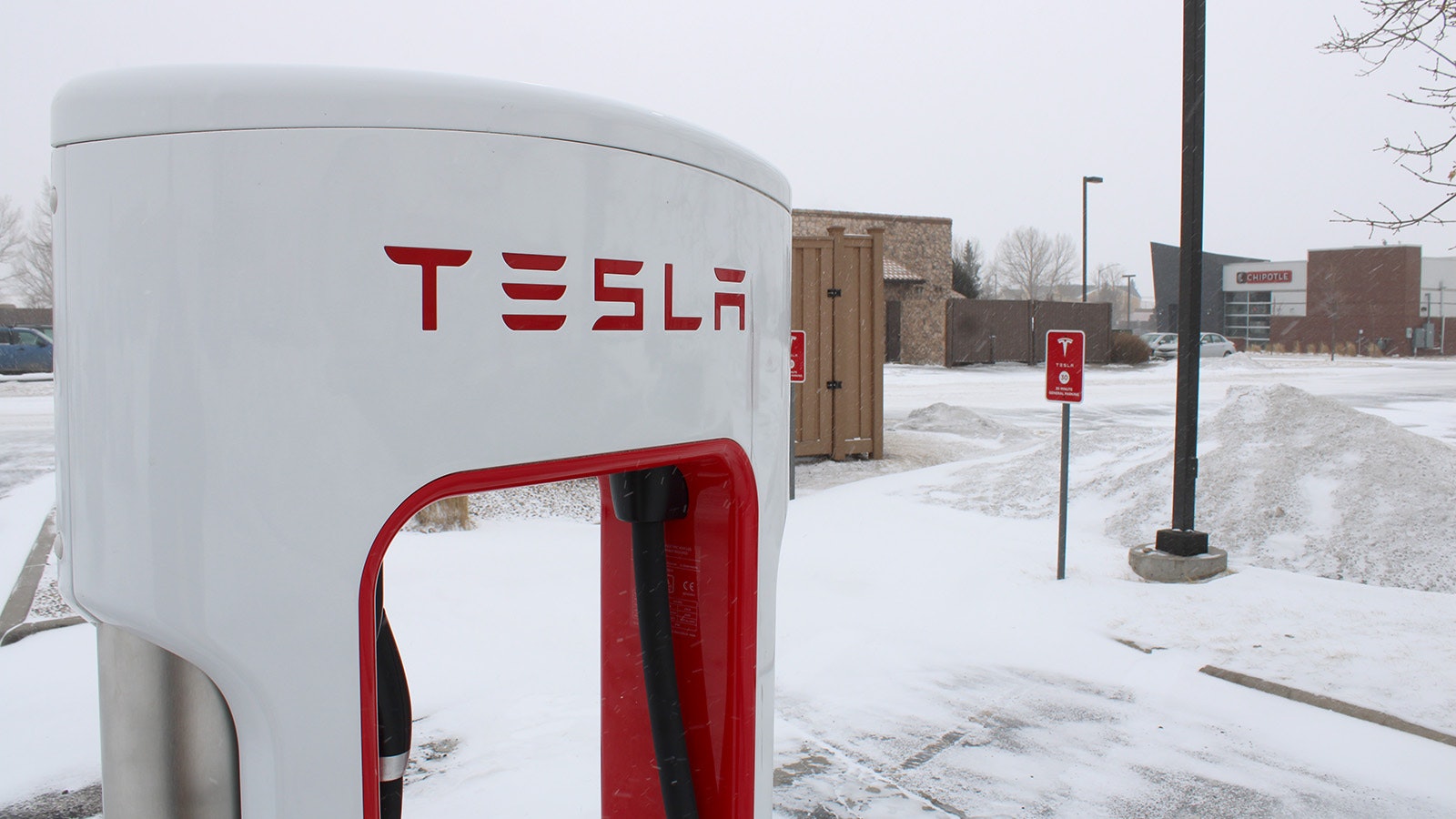The Federal Highway Administration released its final minimum standards for the National Electric Vehicle Infrastructure (NEVI) Program. Now the Wyoming Department of Transportation can begin issuing requests for proposals from private companies to build charging stations along Wyoming’s interstates.
The problem is that the amount of EV traffic on Wyoming’s interstates is so low, and federal requirements so high, that most of the charging stations won’t be self-sustaining for 20 years, according to WYDOT data.
“We don’t perceive that they’re going to be economically feasible for a number of years, probably longer than the amount of time we can support them,” Jesse Kirchmeier, special projects officer with WYDOT, told Cowboy State Daily.
This leaves some doubt if any companies will respond to the state’s requests to build the charging stations.
Plan Approved
WYDOT submitted its plan to the FHA in September, which was required to access the federal money. The initial requirements of the funding was to place charging stations every 50 miles along interstates and within a mile of an exit.
Because of the long distances between towns in Wyoming, WYDOT requested several exemptions to be more accommodating to the rural characteristics of the state.
The FHA denied all but a few, but it approved the state’s overall plan, which will give Wyoming with $24 million over five years. The money will pay for new station construction, modifications of existing stations and operational support for up to five years.
The program requires no state funding, but private companies using the money are required to meet a 20% match for both capital expenditures and operational support.
Charging Ahead
WYDOT Director Luke Reiner said the new rules won’t require the department to make substantial changes to its plan.
In the first phase of Wyoming’s NEVI build out, stations will go in Sundance, Buffalo, Sheridan, Douglas, Wheatland, Pine Bluffs and Laramie. In later phases, the buildout will see about meeting the 50-mile requirement.
“We’ll continue working with the federal government on this one, implement phase one, and then see where phase two goes,” Reiner said.
Reiner said the state has about 600 residents now who have registered electric vehicles, but the reason Wyoming is interested in the program is accommodating EV drivers from out of state.
“That will make a difference for our tourist industry, for the state of Wyoming,” Reiner said.

High Expectations
Besides the 50-mile rule, the stations also must have at least four charging ports providing 150-kilowatts of DC fast-charging capability. Combined with few EV drivers using the stations, the projections in the WYDOT plan estimates the stations here wouldn’t be self-sustaining for 20 years.
Kirchmeier said the department hired a consultant to update the projections. The consultant is using a different methodology and has access to various databases, such as cell tower pings. Combined with traffic data, it’ll provide a more accurate projection of how much traffic the stations are likely to get.
“If they tell the same story, then we can be relatively assured that our numbers and our projections are correct,” Kirchmeier said.
If the consultant comes back with different numbers, officials can provide that information to a company looking to build a station.
Reiner said utility companies said they can supply the 600 watts that the stations will require should four EVs try to charge at a station at once.
Tesla Competition
One of the companies that might tap into Wyoming’s federal EV money is Tesla.
At the same time the federal government released its final NEVI rules, Tesla announced it would make its charging stations compatible with all makes and models of EVs. The stations now are primarily designed only to work with Teslas.
Tesla operates EV charging stations in Sheridan, Laramie and Wheatland, which are three of the seven locations identified for charging stations in the Wyoming NEVI plan.
The NEVI money allows for modifications and upgrades of existing stations, so long as they meet all the other requirements.
“Yes, Tesla would be eligible to apply if they had the best proposal,” Kirchmeier said.
More Stations
In addition to the NEVI funding, another pot of money can be used for building charging stations.
In 2016, Volkswagen was ordered to pay $2 billion for allegedly equipping diesel-powered cars with devices intended to cheat on federal emissions tests.
Wyoming will receive part of that settlement, which will be used for a separate charging station program along Wyoming’s highways.
“We’re going to use that funding to get folks from the interstates to the tourist areas,” Kirchmeier said.
Those won’t have to have as many ports as NEVI stations, so they’re likely to be more profitable.
Reiner said the department will continue researching its NEVI plan and gathering data for the private companies it partners with to use.
“We’re encouraging everyone to keep an open mind and apply. And we’ll do the best we can to provide everybody the information they need to make a smart business decision,” Reiner said.





